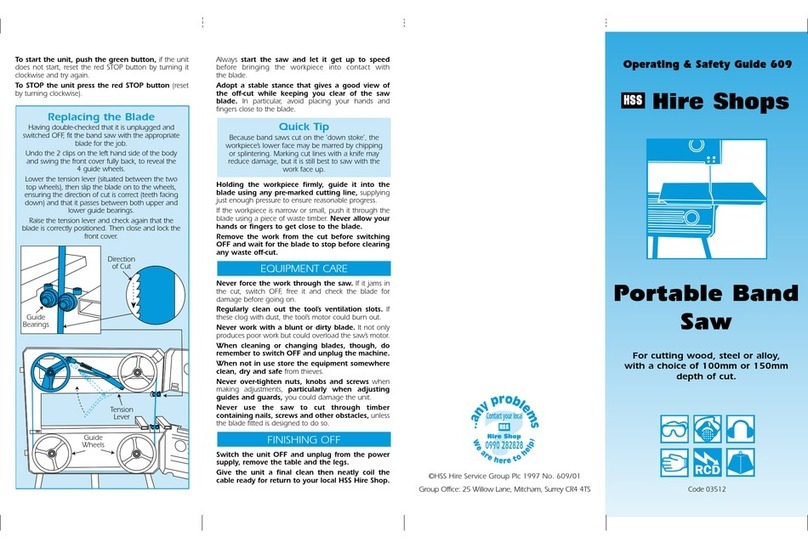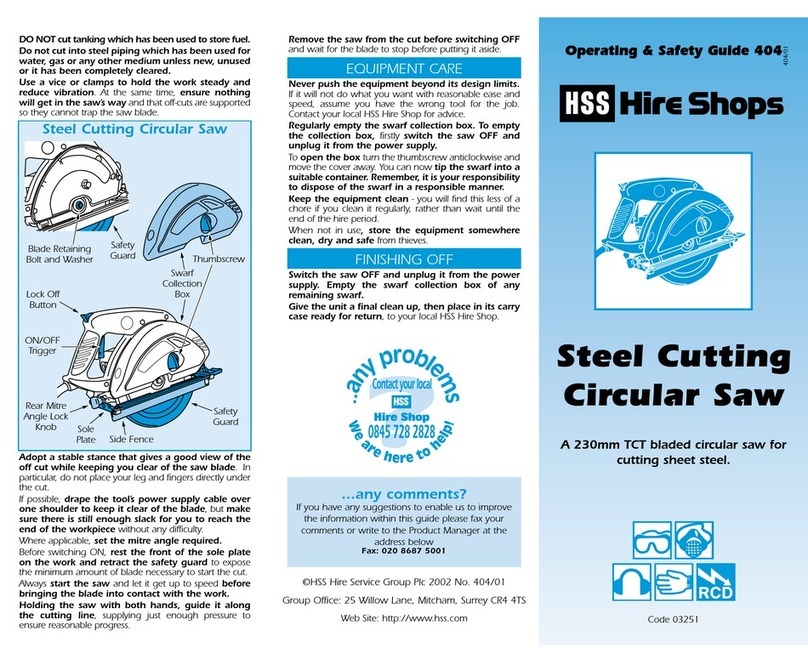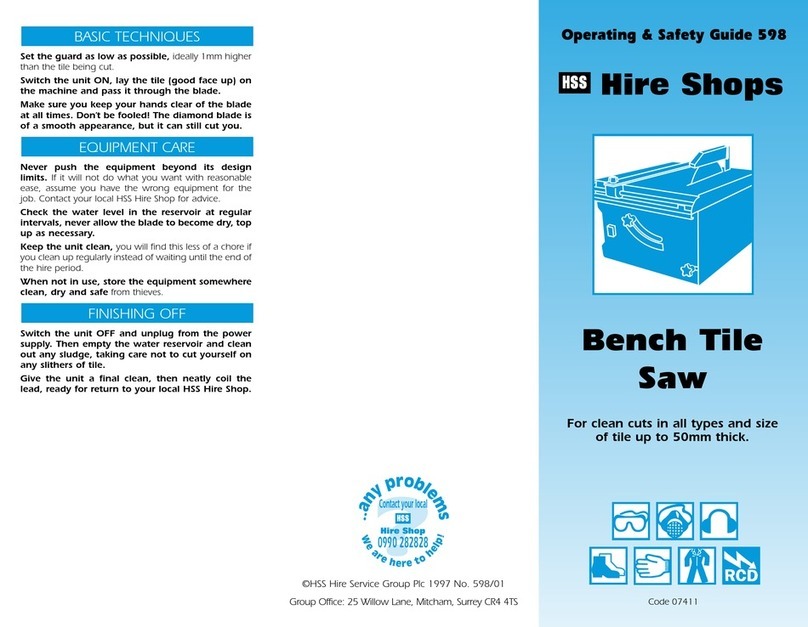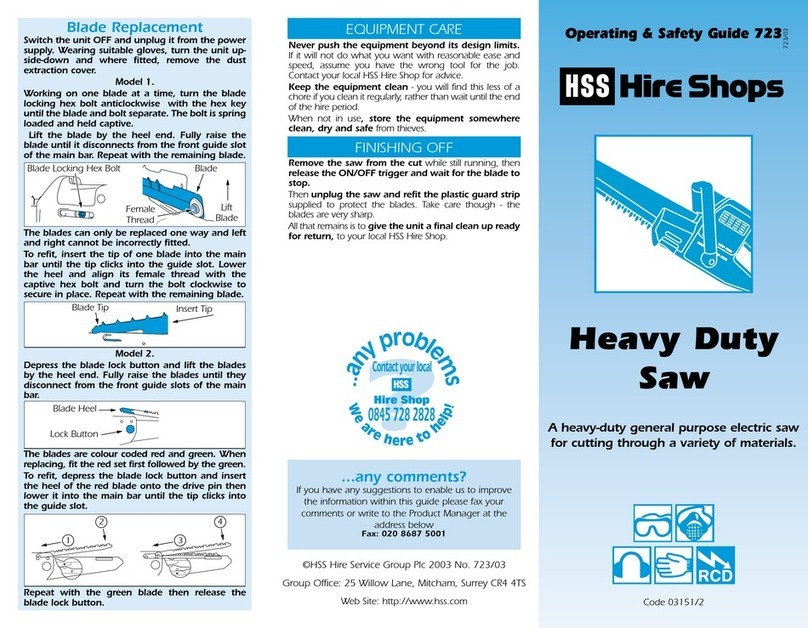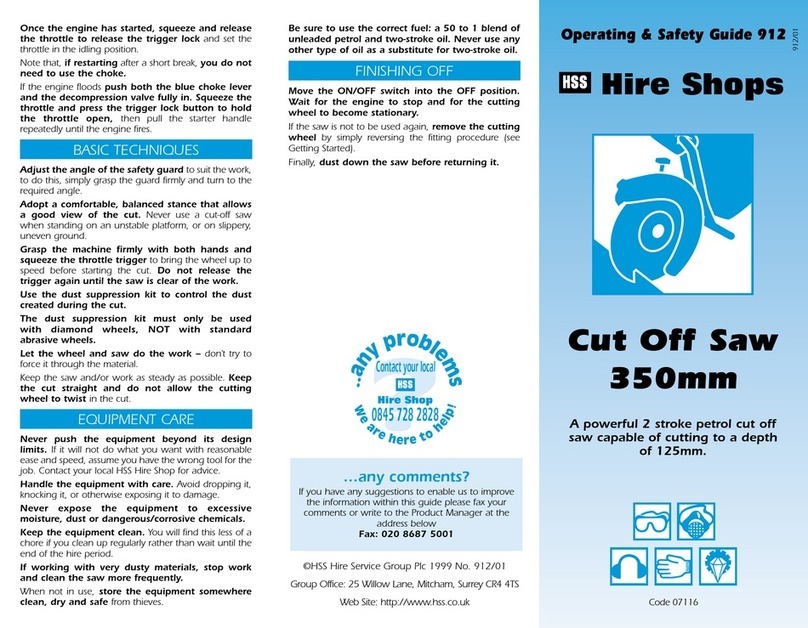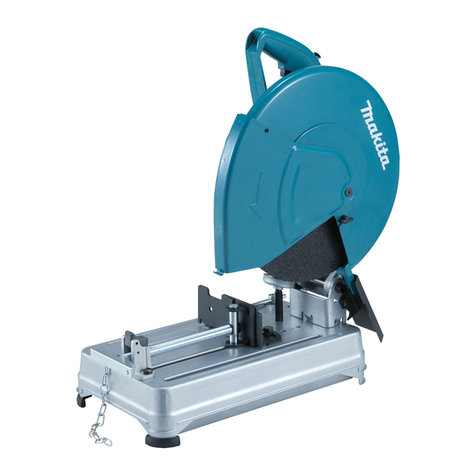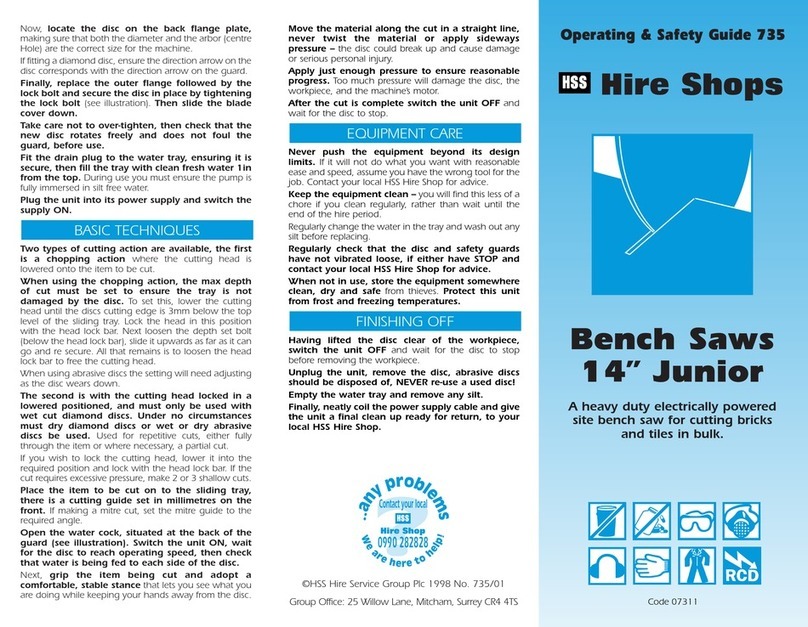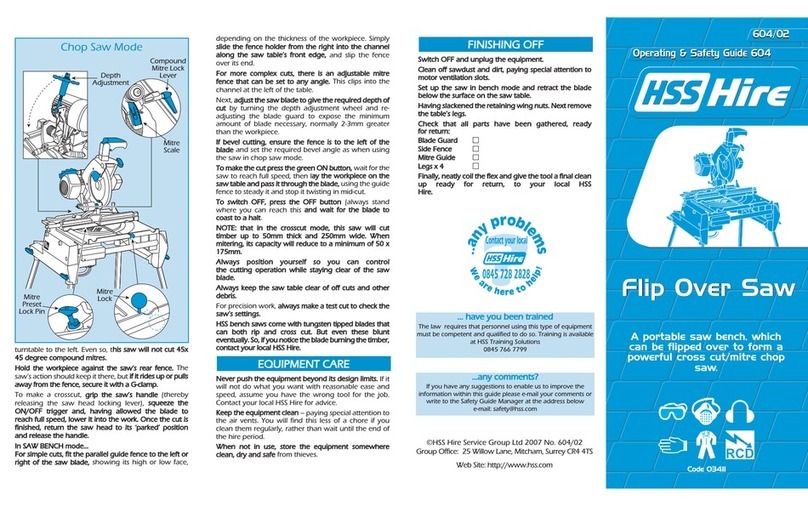
For advice on the safety and suitability of this
equipment contact your local HSS Hire Shop.
Keep children, animals and bystanders away from
the work area.
Never use this equipment if you are ill, feeling
tired, or under the influence of alcohol or drugs.
This equipment should only be used by a
competent person who has read and understood
these instructions.
There is a serious risk of personal injury if you do
not follow all instructions laid down in this guide.
Safety Goggles MUST be worn by everyone in
the work area.
Some materials when cut contain substances
which, when inhaled, can be harmful to
health. A suitable mask must be worn when using
this equipment.
This equipment generates potentially harmful
noise levels. To comply with health and safety at
work regulations, ear defenders must be worn by
everyone in the vicinity.
Wear practical, protective clothing, gloves and
footwear. Avoid loose garments and jewellery that
could catch in moving parts, tie back long hair.
Ensure the work area is well lit and ventilated, if in
doubt, ask about dust extraction and ventilation
equipment at your local HSS Hire Shop.
Make sure you know how to switch this machine OFF
before you switch it ON in case you get into difficulty.
Always switch OFF and unplug the machine before
making adjustments to it. Check that it is switched
OFF and that you have removed all spanners and keys
before plugging it back in.
Having switched OFF, always wait for the blade to
come to rest before removing or replacing
the workpiece.
Never carry or pull the equipment by its flex.
Check the condition of the equipment before use.
If it shows signs of damage or excessive wear, return it to
your local HSS Hire Shop.
Ensure the guard is operating correctly before starting
work. If it does not close automatically and cover the blade,
STOP and contact your local HSS Hire Shop for advice.
Most HSS cross cut mitre saws plug into a standard
13amp power socket. However, 110V models (with a
ELECTRICAL SAFETY
GENERAL SAFETY round yellow plug) must be provided with a suitable
110V generated supply, or powered from the mains via
a suitable 110V transformer (minimum 2.2kvA tool rating).
If the equipment fails, or if its flex or plug gets
damaged, return it. Never try to repair it yourself.
Keep flexes out of harm’s way, and clear of the
work area.
Extension leads should be fully unwound and
loosely coiled, away from the equipment. Never run
them through water, over sharp edges or where they
could trip someone.
Using electrical equipment in very damp or wet
conditions can be dangerous.
To reduce the risk of electric shock, use a
suitable RCD (Residual Current-Operated Device)
available from your local HSS Hire Shop, or power the
equipment from a mains circuit with a built-in RCD.
Ensure the machine and power socket are switched
OFF before plugging into the power supply.
Set the saw on a firm workbench, if desired, fit a dust
extraction unit, ask at your local HSS Hire Shop for details.
If vacuum dust extraction is not used, ensure the work
area is well ventilated.
All that now remains is to connect the saw up to
its power supply and switch the supply ON.
Hold the workpiece against the saw’s rear fence.
The saw’s action should keep it there, but if it rides
up or pulls away from the fence, secure it with
a G-clamp.
To make a cross cut, grip the saw’s handle (thereby
releasing the saw head locking lever), squeeze the
ON/OFF trigger and, having allowed the blade to
reach full speed, lower it into the work. Once the cut
is finished, return the saw head to its ‘parked’
position and release the handle.
To cut wide materials, push the carriage lock on the
motor housing (padlock open symbol) and begin the
cut as already described. Once the blade is through the
work close to the fence, pull the saw head towards you to
complete the cut. For mitres, select the required angle
from the turntable scale and operate the saw as above.
To set the bevel angle, slacken the lever at the rear
of the saw and tilt the saw head, reading the angle
off the protractor scale. Once you have aligned the
required angle, re-tighten the lever to lock the saw head
in place.
BASIC TECHNIQUES
GETTING STARTED
Variable
Speed
Carriage
Lock
Protractor
Scale
Mitre Lock Catch
Carriage & Guard
Release
Lever
ON/OFF
Trigger
Mitre Lock
Wing Nut
Bevel Angle
Adjustment Lever
